The efficacy of pregabalin for the management of acute and chronic postoperative pain in thoracotomy: a meta-analysis with trial sequential analysis of randomized-controlled trials
- PMID: 30643448
- PMCID: PMC6312398
- DOI: 10.2147/JPR.S183411
The efficacy of pregabalin for the management of acute and chronic postoperative pain in thoracotomy: a meta-analysis with trial sequential analysis of randomized-controlled trials
Abstract
Purpose: Pregabalin is commonly used as an analgesic for neuropathic pain. But pregabalin as an adjunct to a multimodal analgesic regimen - although standard clinical protocol in some settings - has remained controversial. This meta-analysis was conducted to identify the efficacy of pregabalin for management of postoperative pain in thoracotomy.
Materials and methods: Pubmed, Embase, Cochrane, Web of Science, Springer, and Clinical Trial Register database were searched for randomized controlled trials (RCTs) of pregabalin in preventing postoperative pain in thoracotomy. Review Manager 5.3 and STATA 12.0 were selected to conduct the meta-analysis. Trial sequential analysis was used to control random errors and calculate the required information size.
Results: Nine RCTs with 684 patients were included in our meta-analysis. Outcomes favoring pregabalin included less pain on a 0-10 scale on 1 day [mean difference (MD): -0.87; 95% CI: -1.55 to -0.19; P=0.01], 3 days (MD: -1.55; 95% CI: -1.93 to -1.18; P<0.00001), 1 month (MD: -1.58; 95% CI: -2.75 to -0.42; P=0.008), 3 months (MD: -1.69; 95% CI: -2.71 to -0.66; P=0.001) postoperatively, and less incidence of neuropathic pain (OR: 0.20; 95% CI: 0.05-0.91; P=0.04), less mean morphine consumption (MD: -5.03; 95% CI: -8.06 to -1.99; P=0.001), but more dizziness (OR: 3.33; 95% CI: 1.36-8.17; P=0.009), more drowsiness (OR: 8.61; 95% CI: 2.23-33.20; P=0.002), and less constipation (OR: 0.23; 95% CI: 0.09-0.59; P=0.002). There was no statistical differences in pain score on 7 days (MD:-0.77; 95% CI: -2.38 to 0.84; P=0.35), nausea (OR: 0.73; 95% CI: 0.42-1.26; P=0.26), and vomiting (OR: 0.83; 95% CI: 0.36-1.90; P=0.65).
Conclusion: Pregabalin can prevent postoperative pain in thoracotomy and decrease incidence of neuropathic pain and morphine consumption. Pregabalin may be a valuable asset in management of acute and persistent postoperative pain in thoracotomy.
Keywords: meta-analysis; neuropathic pain; postoperative pain; pregabalin; thoracotomy.
Conflict of interest statement
Disclosure The authors report no conflicts of interest in this work.
Figures


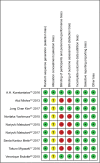
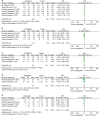
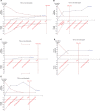

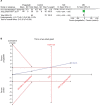
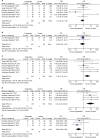
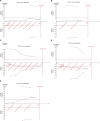
Similar articles
-
Perioperative Pregabalin for Preventive Analgesia in Breast Cancer Surgery: A Meta-analysis of Randomized Controlled Trials.Clin J Pain. 2020 Dec;36(12):968-977. doi: 10.1097/AJP.0000000000000883. Clin J Pain. 2020. PMID: 32960823
-
The analgesic efficacy of pregabalin for shoulder arthroscopy: A meta-analysis of randomized controlled trials.Medicine (Baltimore). 2021 Sep 24;100(38):e26695. doi: 10.1097/MD.0000000000026695. Medicine (Baltimore). 2021. PMID: 34559094 Free PMC article.
-
Influence of pregabalin on post-operative pain after laparoscopic cholecystectomy: A meta-analysis of randomised controlled trials.J Minim Access Surg. 2020 Apr-Jun;16(2):99-105. doi: 10.4103/jmas.JMAS_209_18. J Minim Access Surg. 2020. PMID: 30618423 Free PMC article. Review.
-
The efficacy of pregabalin for the management of postoperative pain in primary total knee and hip arthroplasty: a meta-analysis.J Orthop Surg Res. 2017 Mar 24;12(1):49. doi: 10.1186/s13018-017-0540-0. J Orthop Surg Res. 2017. PMID: 28340617 Free PMC article.
-
Pregabalin can decrease acute pain and morphine consumption in laparoscopic cholecystectomy patients: A meta-analysis of randomized controlled trials.Medicine (Baltimore). 2017 May;96(21):e6982. doi: 10.1097/MD.0000000000006982. Medicine (Baltimore). 2017. PMID: 28538404 Free PMC article. Review.
Cited by
-
The anesthetic management and the role of extracorporeal membrane oxygenation for giant mediastinal tumor surgery.Mediastinum. 2023 Jan 5;7:2. doi: 10.21037/med-22-35. eCollection 2023. Mediastinum. 2023. PMID: 36926288 Free PMC article. Review.
-
Perioperative pregabalin reduced fatigue scores after thoracoscopic pneumonectomy in a RCT of NSCLC patients.Am J Cancer Res. 2023 May 15;13(5):2201-2212. eCollection 2023. Am J Cancer Res. 2023. PMID: 37293162 Free PMC article.
-
Perioperative Administration of Pregabalin and Esketamine to Prevent Chronic Pain After Breast Cancer Surgery: A Randomized Controlled Trial.Drug Des Devel Ther. 2023 Jun 8;17:1699-1706. doi: 10.2147/DDDT.S413273. eCollection 2023. Drug Des Devel Ther. 2023. PMID: 37313456 Free PMC article. Clinical Trial.
-
Targeted ubiquitination of sensory neuron calcium channels reduces the development of neuropathic pain.Proc Natl Acad Sci U S A. 2022 May 17;119(20):e2118129119. doi: 10.1073/pnas.2118129119. Epub 2022 May 13. Proc Natl Acad Sci U S A. 2022. PMID: 35561213 Free PMC article.
-
Post-thoracotomy pain syndrome in the era of minimally invasive thoracic surgery.J Thorac Dis. 2024 May 31;16(5):3422-3430. doi: 10.21037/jtd-24-158. Epub 2024 May 20. J Thorac Dis. 2024. PMID: 38883660 Free PMC article. Review.
References
-
- Joshi GP, Bonnet F, Shah R, et al. A systematic review of randomized trials evaluating regional techniques for postthoracotomy analgesia. Anesth Analg. 2008;107(3):1026–1040. - PubMed
-
- Kehlet H, Dahl JB. The value of “multimodal” or “balanced analgesia” in postoperative pain treatment. Anesth Analg. 1993;77(5):1048–1056. - PubMed
LinkOut - more resources
Full Text Sources

